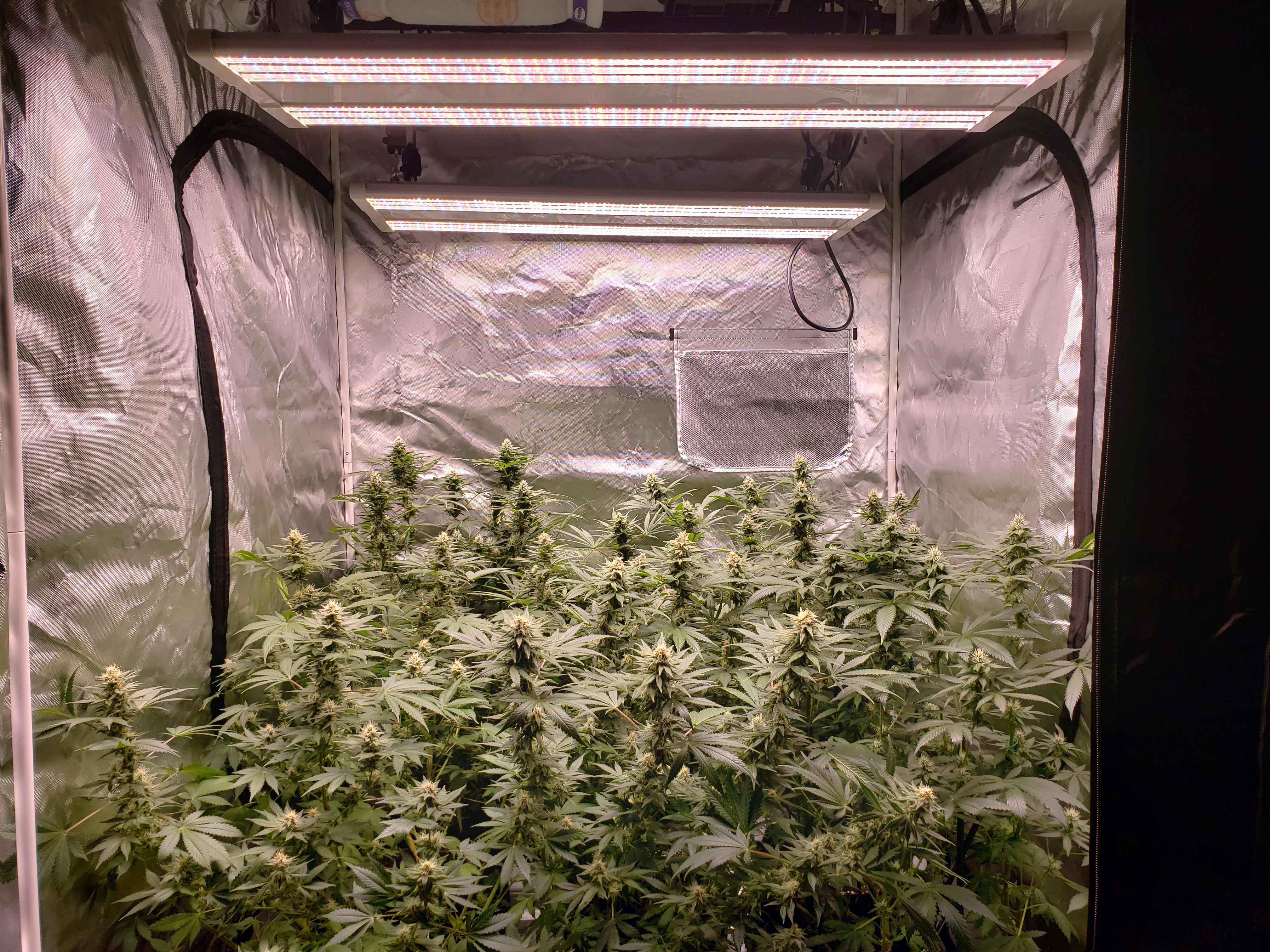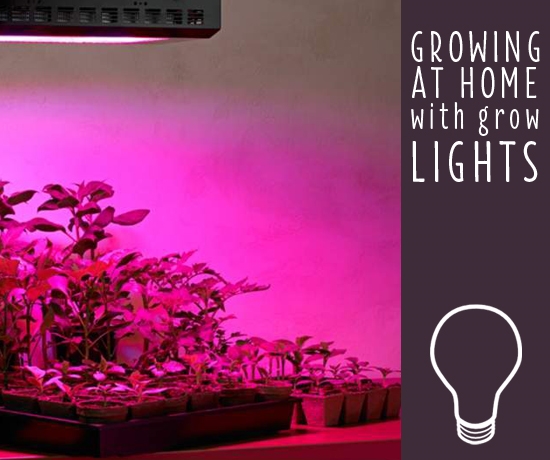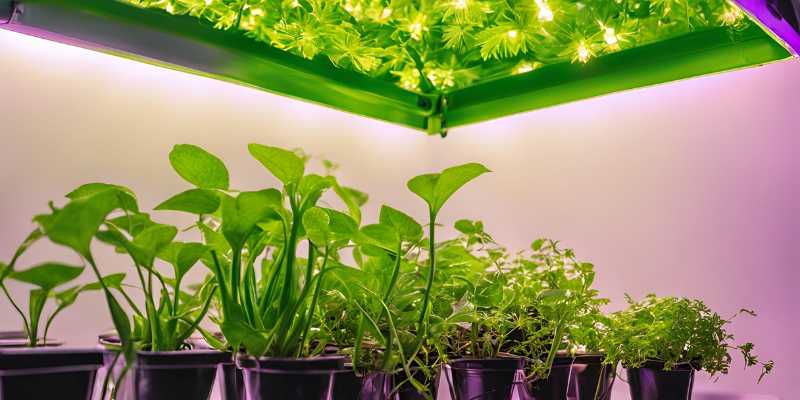Grow lights can be a gardener’s best friend. They help plants grow indoors.
If you love gardening but lack natural sunlight, grow lights can save the day. These lights mimic the sun’s rays, providing the right light spectrum for plant growth. Whether you have a small apartment or a dimly lit house, grow lights ensure your plants thrive.
They are versatile and suitable for various plants, from herbs to flowers. But to get the most out of them, you need to know the best ways to use them. This guide will help you understand how to set up, adjust, and maintain your grow lights for optimal plant health. Let’s dive in and make your indoor garden flourish.

Credit: www.growweedeasy.com
Introduction To Grow Lights
Grow lights help plants grow indoors. Sunlight is important for plants. But indoor plants need extra light. Grow lights give them that light. They help plants grow strong and healthy. Many people use grow lights for indoor gardening. They are also used in greenhouses. Grow lights can help grow vegetables, herbs, and flowers.
Importance Of Grow Lights
Plants need light to make food. This process is called photosynthesis. Without enough light, plants cannot grow well. Natural sunlight is not always available indoors. Grow lights can provide the light plants need. They help plants grow even in dark places. Grow lights can also extend growing seasons. They allow people to grow plants all year round.
Types Of Grow Lights
| Type of Grow Light | Description |
|---|---|
| Fluorescent | Good for seedlings and small plants. They are energy-efficient and do not get too hot. |
| LED | Lasts a long time and uses less energy. They can be used for all stages of plant growth. |
| HID | High-intensity lights for large plants. They are very bright but use more electricity. |

Credit: www.lampsplus.com
Choosing The Right Grow Light
Choosing the right grow light can greatly enhance plant growth. Position the lights properly for even light distribution. Adjust the height regularly to match plant growth stages.
Led Vs. Fluorescent
LED lights last longer and use less energy. Fluorescent lights cost less upfront but need replacing more often. LED lights give off less heat. This helps keep plants cool. Fluorescent lights can get hot. This may hurt plants if they get too close. LED lights are usually brighter. Fluorescent lights may need to be placed closer to plants. Choose LED for long-term use. Pick fluorescent for a cheaper start.
Wattage And Lumens
Wattage shows how much energy a light uses. Lumens tell how bright the light is. More lumens mean brighter light. For growing plants, aim for higher lumens. A 30-watt light with 2,000 lumens is good. A 50-watt light with 4,000 lumens is better. Look for lights with high lumens per watt. This means they are energy-efficient. Check the light’s label for these details.
Setting Up Your Grow Lights
Set up your grow lights for best results by positioning them close to plants. Ensure the light covers all leaves evenly. Adjust the height as plants grow to maintain optimal light exposure.
Proper Placement
Place your grow lights above your plants. This mimics natural sunlight. Ensure even light spread for all plants. Adjust the angle of the lights if needed. Avoid placing lights too close to leaves. This can cause burns. Maintain a safe distance to prevent damage.
Height And Distance
Keep the lights 12-18 inches above the plants. This distance is optimal. Different plants need different heights. Check the light requirements for each plant type. Adjust the height as plants grow taller. Move the lights up to avoid burning leaves. Keep an eye on plant health and adjust as needed.

Credit: www.youtube.com
Light Cycles For Optimal Growth
Plants need light to grow. Different plants need different light cycles. Some need long days of light. Others need short days. Photoperiods are the periods of light and dark. Control these for better plant growth.
Adjusting light is easy. Use a timer for your grow lights. Set it for the right hours. For example, 18 hours light and 6 hours dark. This can help young plants. Mature plants need 12 hours of light and 12 hours of dark. This helps them flower.
Supplementing Natural Light
Using grow lights can effectively supplement natural light for indoor plants. Place the lights close to the plants for optimal growth. Ensure they get enough light each day.
Combining With Sunlight
Grow lights help plants grow indoors. Sunlight is still very important. Combining natural light with grow lights gives the best results. Place plants near windows. Use grow lights when the sun is not shining. This helps plants get enough light every day.
Indoor Vs. Outdoor
Indoor plants need more grow lights. Outdoor plants get more sunlight. Grow lights are useful for cloudy days. They help plants grow strong. Make sure to use the right type of light. LED grow lights are very popular. They use less energy and last longer.
Monitoring Light Intensity
Light meters help measure the amount of light your plants get. These devices are easy to use and very useful. Place the meter close to the plants. This gives you an accurate reading. Most plants need different light levels. Some need more, others need less. Light meters show you if your plants get too much or too little light. This helps you adjust the grow lights.
Light stress affects plant health. Leaves may turn yellow or brown. This is a bad sign. Plants might also wilt or look weak. Too much light can burn the leaves. Too little light stops growth. Watch your plants closely. Adjust lights if you see any signs of stress. Healthy plants should look green and strong.
Maximizing Efficiency
Use LED grow lights to save energy. They use less power. Adjust light schedules to match plant needs. Turn off lights when not needed. Use timers to automate this. Position lights close to plants. This reduces energy waste. Choose energy-efficient models. They cost more initially but save money over time.
Reflective surfaces help use light better. Place reflective materials around plants. This includes walls and floors. Aluminum foil and mylar are good choices. They bounce light back to plants. White paint also works well. It reflects light evenly. Avoid dark colors as they absorb light. This reduces efficiency.
Common Mistakes To Avoid
Giving plants too much light can harm them. Plants need a balance of light and darkness. Too much light can burn their leaves. This can stop them from growing well. Always check the light needs of your plants.
Not all plants need the same light. Some need more, some need less. Knowing the light needs of each plant is important. This helps them grow strong and healthy. Use the right light for each plant. Watch for signs of too much or too little light.
Frequently Asked Questions
What Are Grow Lights Used For?
Grow lights are used to stimulate plant growth indoors. They provide the necessary light spectrum for photosynthesis.
How Long Should Grow Lights Be On?
Grow lights should be on for 12-16 hours a day. This duration mimics natural daylight and promotes healthy plant growth.
Can Any Light Be Used As A Grow Light?
Not all lights can be used as grow lights. Only those with the right spectrum and intensity are effective for plant growth.
What Type Of Grow Light Is Best?
LED grow lights are considered the best. They are energy-efficient, long-lasting, and provide the full spectrum of light needed for plants.
Conclusion
Using grow lights effectively boosts your plant growth indoors. Proper placement and timing are crucial. Ensure lights mimic natural sunlight for best results. Adjust height as plants grow. Regularly check and maintain your lights. Healthy plants thrive under consistent and appropriate light.
Implement these tips for a flourishing indoor garden. Happy gardening!

My mission is to help you bring the beauty of nature indoors with expert advice, detailed plant care guides, and creative design ideas.





Leave a Reply